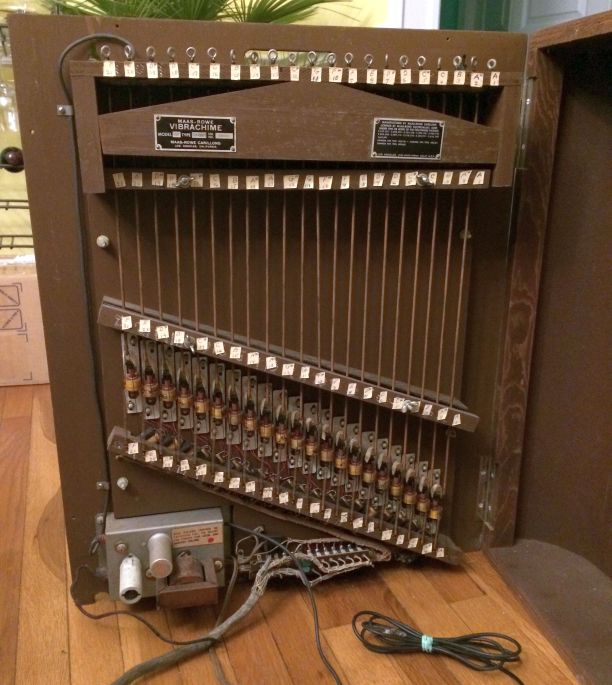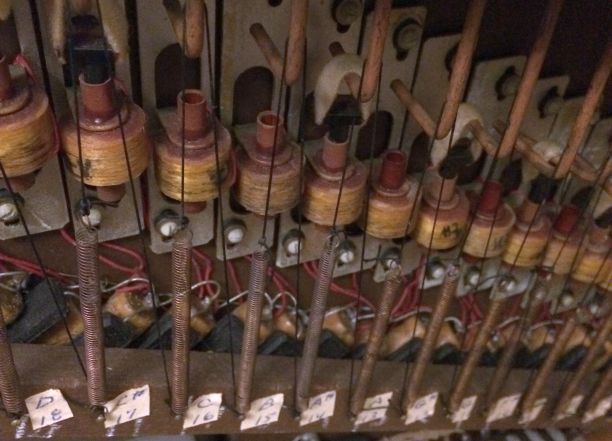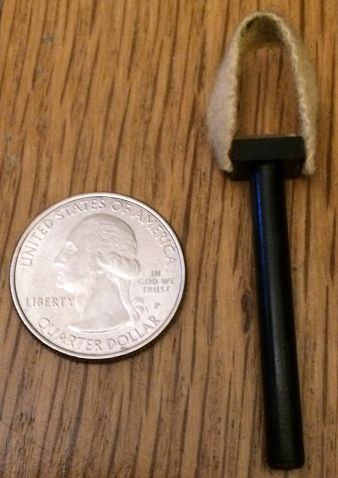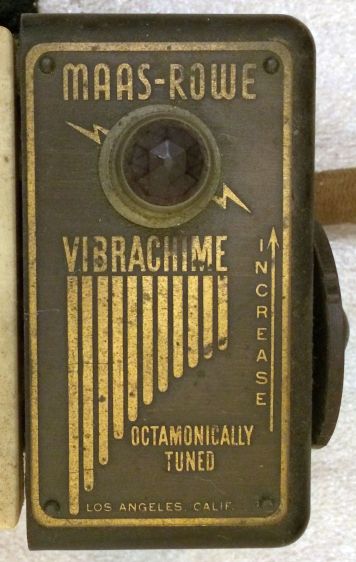

| The word carillon dates back to at least 1775, meaning a "set of tuned, stationary bells sounded by means of a keyboard or other machinery." |
| MAAS-ROWE VIBRACHIME |
| I am interested in restoring Vibrachimes. If you have an old unit, parts, documentation or even sales material just gathering dust, send me an email! |
 The Mass-Rowe Vibrachime is composed of a keyboard, a set of chime rods and strikers,
an amplifier and a speaker.
The Mass-Rowe Vibrachime is composed of a keyboard, a set of chime rods and strikers,
an amplifier and a speaker.
Inside a hinged wooden cabinet, electromechanical strikers hit the bent end of heavy gauge wire rods, where each wire is cut to a specific length to produce a particular note. The Model 80 (pictured here) has 21 wire rods that are tuned with a strong major third partial. (From right to left)
|

 Individual strikers slide in an electromagnetic field and impact the end of a tuned rod.
A loop of felt cloth keeps the rod and striker roughly aligned and serves as a
damper to silence the rod.
Individual strikers slide in an electromagnetic field and impact the end of a tuned rod.
A loop of felt cloth keeps the rod and striker roughly aligned and serves as a
damper to silence the rod.
|

 The keyboard is basically a switch array (one per rod) plus a volume control and pilot (power) light.
The keyboard is basically a switch array (one per rod) plus a volume control and pilot (power) light.
There is a separate cable with an RCA plug for connection to an external amplifier.
|
| LOUIS MAAS |
Note from 2005:
The Maas of the Maas-Rowe duo was Louie Maas. He started out working installing and repairing Wurlitzer pipe organs and Robert Mortons on the west coast in the Los Angeles area. He ultimately established his own organ shop. His principal claim to fame was removing organs from older, lesser theatres and reinstalling them in new theatres mainly for Fox West Coast theatres. Fox had a policy for quite a few years after sound films came on the scene that any new theatre they built there had to be a organ ready for the grand opening. Louis installed a lot of organs in the early 30s including the Fox Beverly Hills, the Phoenix AZ Fox and probably the Tucson Fox. Very interesting article on Louie in the ATOS magazine about 2 years back. He often took two small organs of 4-5 ranks and combined the best ranks from each to form the 'new' organ. |